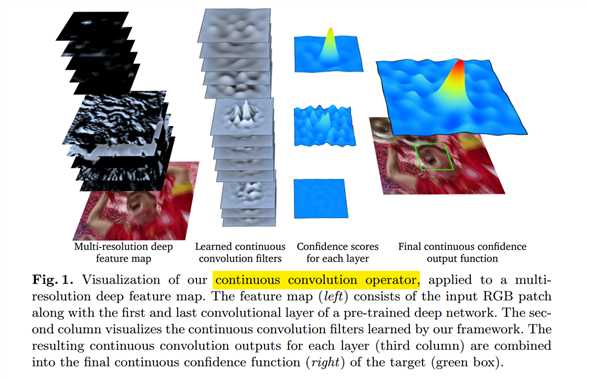标签:die extract search rto its limit http ann work
Beyond Correlation Filters: Learning Continuous Convolution Operators for Visual Tracking
ECCV 2016
The key point of KCF is the ability to efficiently exploit available negative data by including all shifted versions of a training sample, in anthor words, the dense sampling stegray. But the single-resolution feature maps limiting its potential.
This paper go beyond the conventional DCF framework and introduce a novel formulation for training continuous convolution filters. The authors use an implicit interpolation model to pose the learning problem in the continuous spatial domain. The can make use of multi-resolution deep feature maps, leading to superior results on many tracking benchmarks.
The code can be found here: http://www.cvl.isy.liu.se/research/objrec/visualtracking/conttrack/index.html
Some works found the shallow convolutional layers of CNN are import for visual tracking because these layers provided higher spatial resolution, which is crucial for accurate target localization. But still no works studied the issue of fusing multiple layers in a DCF framework.
A formulation for learning a convolution opearator in the continuous spatial domain is proposed to handle the issue of multi-resolution feature maps. They employs an implicit interpolation model of the training samples and learns a set of convolutional filters to produce a continuous-domain confidence map of the target. Here is a figure to illustrate the whole process:

Learning Continuous Convolution Opeartors.
The target is to train a continuous convolution opeartor based on training samples $x_j$. The samples consist of feature maps extracted from image patches. Each sample $x_j$ contains D feature channels, extracted from the same image patch.
标签:die extract search rto its limit http ann work
原文地址:http://www.cnblogs.com/wangxiaocvpr/p/6921776.html